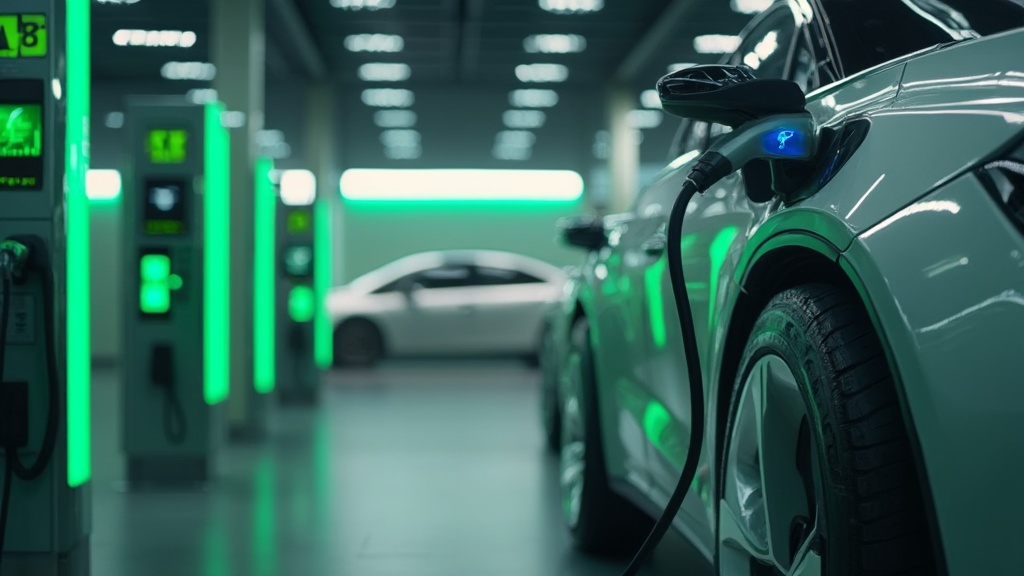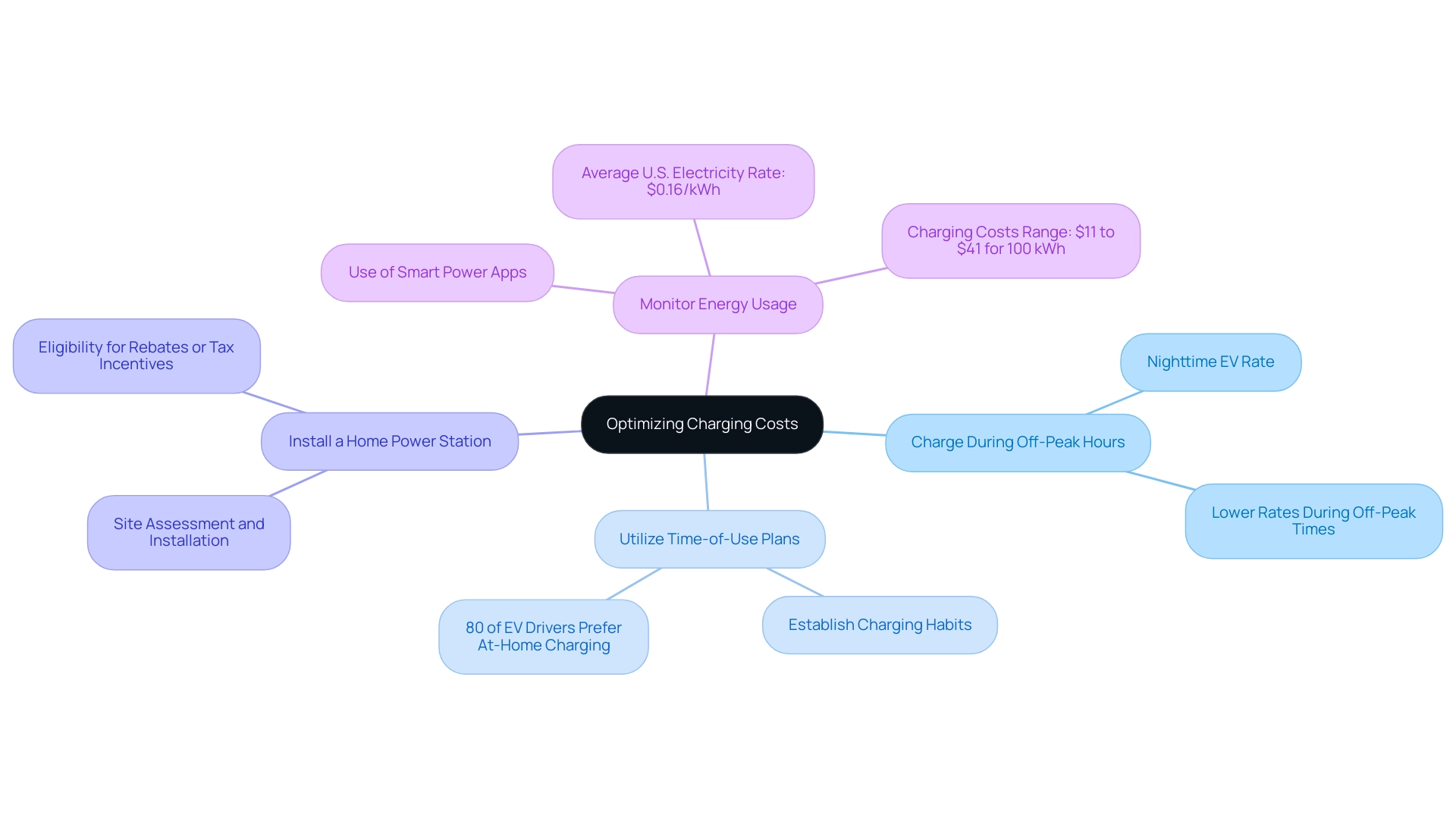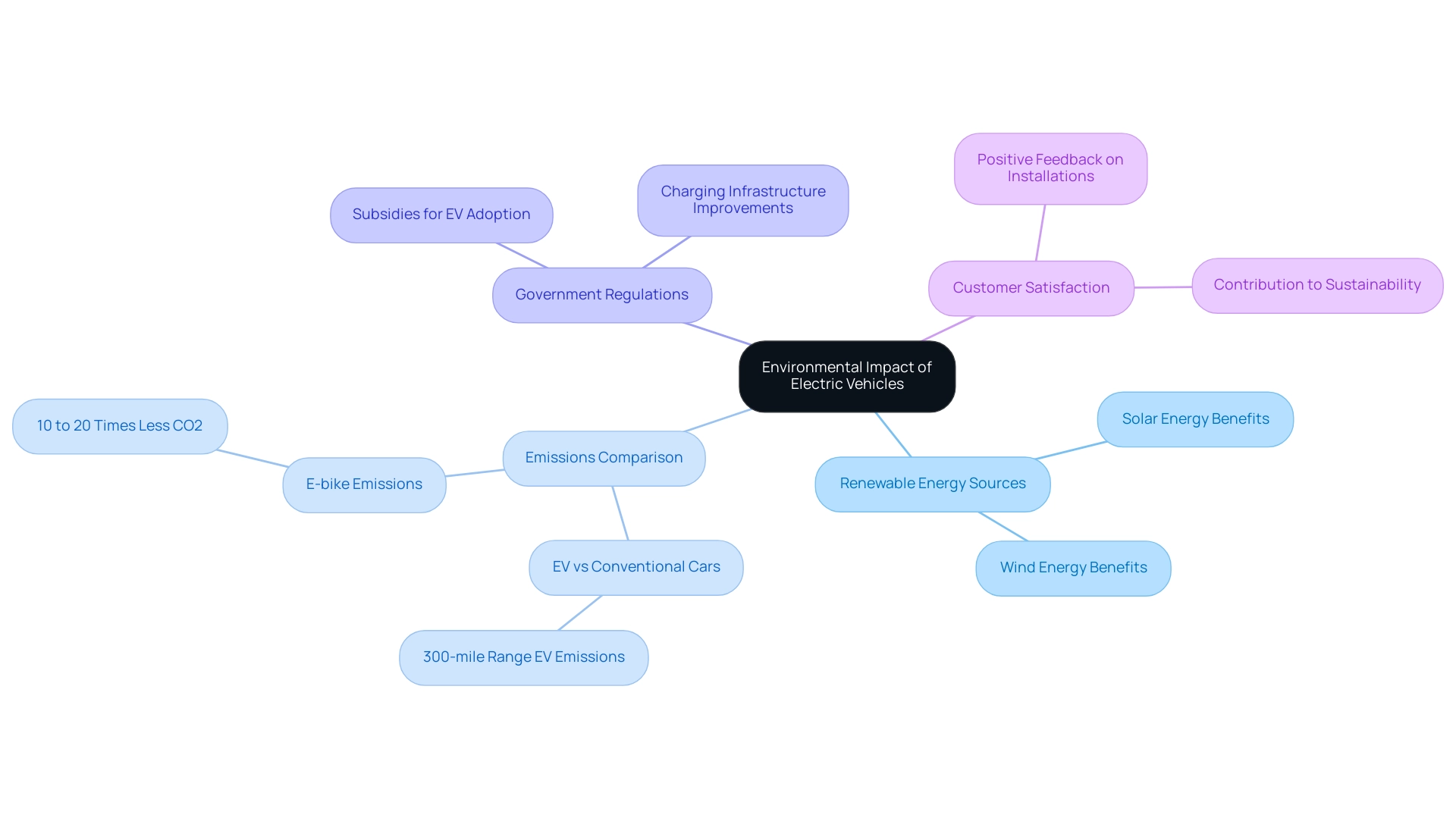Introduction
As electric vehicles (EVs) continue to gain traction in the automotive landscape, understanding the intricacies of energy consumption becomes essential for any prospective or current owner. With metrics like kilowatt-hours per 100 miles at the forefront, this knowledge not only aids in comparing model efficiencies but also empowers drivers to make informed choices that align with their lifestyle and budget.
As the industry shifts towards electrification, driven by both consumer demand and regulatory pressures, grasping the factors that influence energy usage—from driving habits to terrain—can enhance the overall EV experience.
This article delves into the key aspects of energy consumption for electric vehicles, practical strategies for optimizing charging costs, and the broader environmental impact, all while highlighting the innovations shaping the future of sustainable transportation.
Whether you’re considering an EV or looking to maximize your current vehicle’s efficiency, this guide offers valuable insights to navigate this exciting transition.
Understanding Energy Consumption Metrics for Electric Vehicles
Electric transports (EVs) typically quantify their power usage in kilowatt-hours (kWh) per 100 miles, and understanding the EV energy consumption metric is crucial for any EV owner. It enables you to compare the efficiency of various models and make informed choices. For 2024, the expected EV energy consumption for electric vehicles is around 24 kWh per 100 miles, though this can vary significantly based on several factors.
For example, your driving habits—like speeding or abrupt acceleration—can result in greater consumption, as can the terrain you traverse. Hilly roads tend to demand more power, while flat routes offer better efficiency. Additionally, using climate control systems, like air conditioning or heating, can further impact EV energy consumption.
Understanding these variables allows you to optimize your driving habits for improved efficiency and savings. Significantly, more than 20 original equipment manufacturers (OEMs), which represent over 90% of car sales in 2023, are dedicated to enhancing the deployment of eco-friendly transportation. By 2030, projections suggest that between 42% and 58% of car sales could be powered by electricity.
This shift not only represents a commitment to electrification but also emphasizes the significance of comprehending EV energy consumption metrics as you transition to an electric mode of transport. Furthermore, Geely has increased its ambition from 40% to 50% ZEV sales by 2025 globally, reflecting a broader industry trend toward electrification. As the Environmental Protection Agency (EPA) noted, stricter CO standards for heavy-duty transport are being adopted, pushing for a 45% reduction in emissions by 2030.
This regulation highlights the importance of efficiency in reducing overall environmental impact, making it essential for EV owners to stay informed about their EV energy consumption. Additionally, the case study on automakers’ electric vehicle targets reinforces the commitment to electrification, indicating that if all manufacturers’ targets are combined, a significant portion of future car sales will be electric.
Optimizing Charging Costs: Strategies for EV Owners
To assist you in saving on power costs, consider these effective strategies:
-
Charge During Off-Peak Hours: Many utility companies provide lower rates during off-peak times, typically at night or during the day when overall energy demand is reduced. By planning your EV energy consumption during these hours, you can significantly lower your electricity bill. For instance, Waunakee Utilities has introduced a ‘Nighttime EV Rate’, which is a fantastic option for those looking to maximize savings.
-
Utilize Time-of-Use Plans: Check if your utility offers time-of-use (TOU) plans, which can dramatically decrease your expenses for electricity. As Tim Ament, the director of rates at WPPI Energy, explains,
By having rates in place when customers purchase an EV, customers can establish their refueling habits to coincide with the preferred window right away.
This means that with a little planning, you can take advantage of the best rates available.
In fact, 80% of EV drivers prefer the convenience of at-home EV power supply, making it essential to explore these options.
-
Install a Home Power Station: Our team at Powercore Electric specializes in the installation of EV power stations, ensuring a seamless process from start to finish. We begin with a thorough site assessment to find the best location for your station and consider any necessary electrical upgrades.
Once everything is set, we install the power station while adhering to all safety and regulatory standards. Finally, we rigorously test the installation to confirm everything is functioning optimally. Having a dedicated home power station not only accelerates the refueling process but may also make you eligible for rebates or tax incentives, further reducing your overall costs.
-
Monitor Energy Usage: Use a smart power app to track your energy consumption and expenses. By monitoring your usage, you can make adjustments to optimize your power habits. As we look ahead, it’s important to note that the average residential electricity rate in the U.S. is currently $0.16 per kilowatt-hour, with rates varying by state.
For example, charging 100 kWh can cost between $11 in Washington and up to $41 in Hawaii. This highlights the importance of being mindful about when and how you charge your EV to manage EV energy consumption. These strategies not only support your pocketbook but also align with eco-conscious living.
The Environmental Impact of Electric Vehicle Energy Consumption
Electric vehicles play a vital role in mitigating climate change by reducing our dependence on fossil fuels. Yet, the environmental benefits of EVs hinge significantly on the EV energy consumption associated with how we power them. Transitioning to renewable power sources—like solar and wind—can greatly enhance their sustainability.
At Powercore Electric, we provide solar panel installations and EV docking stations designed to help you harness clean energy. By opting for these sustainable solutions, EV owners not only shrink their carbon footprints but also contribute to the larger goal of decarbonizing our electricity grid. In fact, recent reports highlight that a 300-mile range EV emits about a third fewer emissions over its lifespan compared to a conventional car.
Furthermore, new government regulations and subsidies are tackling challenges such as power supply systems, encouraging the uptake of eco-friendly automobiles. Embracing this relationship encourages responsible charging practices, aligning our daily choices with a commitment to a cleaner, healthier environment. As climate scientists note, vehicle electrification stands out as one of the most effective pathways to cut down on planet-warming greenhouse gas emissions, making it not only an eco-friendly choice but also a financially savvy one in the long run.
Furthermore, it’s important to mention that e-bikes produce 10 to 20 times less CO2 per kilometer than cars, depending on the electricity source, further illustrating the effect of renewable resources on decreasing emissions. The sustainability of electric vehicles is influenced by the EV energy consumption related to the power mix of a region, highlighting the importance of transitioning to greener sources. With Powercore Electric’s local knowledge and dedication to quality workmanship, we are here to assist you in transitioning to sustainable power that serves your home and transportation efficiently.
Our customers are consistently satisfied; one recent client stated, ‘The installation of my solar panels and EV charger was seamless, and the quality of work was exceptional. I feel good knowing I’m contributing to a sustainable future.
EVs vs. Traditional Vehicles: A Comparative Analysis of Energy Efficiency
Electric automobiles stand out as champions of power efficiency when compared to conventional internal combustion engine cars. Did you know that the ev energy consumption of EVs can convert over 60% of the electrical power sourced from the grid into force at the wheels? In contrast, gasoline vehicles only utilize about 20% of their fuel power for actual movement.
For example, the Nissan Leaf’s power usage ranges from 15 to 20 kWh/100 km, showcasing its impressive efficiency. This remarkable efficiency not only leads to reduced costs per mile but also contributes to a more sustainable driving experience by improving ev energy consumption. Plus, with fewer moving parts and no oil changes, EVs tend to require significantly less maintenance.
When you take a closer look at the total cost of ownership—including savings on fuel, lower maintenance expenses, and possible government incentives—it becomes clear that electric transportation options frequently emerge as the more budget-friendly and environmentally responsible choice. As Fernando Alejandro Murillo mentioned in his comparative analysis:
- “The insights gained from efficiency studies will only enhance our understanding of the benefits of EVs and their influence on EV energy consumption compared to conventional combustion modes of transport.”
This is especially significant as we examine their performance in various terrains and conditions, including insights from ongoing research that aims to compare efficiency at different altitudes, further illustrating the advantages of EVs in diverse environments.
The Future of EV Energy Consumption: Innovations and Trends
The future of battery-powered transport energy use is indeed promising, especially with innovations that enhance EV energy consumption and reshape the landscape. Significantly, advancements in battery technology are paving the way for longer ranges and faster recharge times, greatly improving the convenience of owning an EV. For example, Toyota is presently evaluating a solid-state battery that features an impressive refueling time of just seven minutes, with plans for its application in electric vehicles by 2026.
This is a game changer for drivers looking to minimize downtime, especially since smart grid technology is crucial in optimizing energy distribution and managing EV energy consumption while seamlessly integrating renewable energy sources, such as those provided by Powercore Electric’s solar panels and battery backups. With our charging infrastructure, which includes solar-integrated charging stations, EV owners can expect reduced costs and improved efficiency, leading to a decrease in EV energy consumption. Recent trends reveal a nearly 14% drop in battery pack prices, despite fluctuations in lithium carbonate prices, which speaks to the evolving market dynamics.
Specifically, lithium prices fell 20% between January and March 2023, due to an anticipated rise in supply and slower demand growth, especially in the EV sector in China. Additionally, companies like TECHNIA are offering valuable support for clean transportation startups, emphasizing the significance of Product Lifecycle Management in streamlining design and creation processes. This support aids entrepreneurs secure a presence in the changing electric-powered transport sector with effectiveness and grace.
As emphasized by industry expert Dave Nichols,
The advancements in battery technology are set to make EV ownership more feasible and appealing than ever before.
At Powercore Electric, we’re committed to helping homeowners embrace this transition to a cleaner, more sustainable future through our comprehensive offerings, including solar panels and battery backups. Keeping an eye on these trends will empower you to maximize your electric vehicle experience by effectively managing EV energy consumption, ensuring you stay ahead in the ever-evolving world of sustainable transportation.
Ready to make the switch? Contact us today to learn more about our EV charging solutions and discover your solar savings!
Conclusion
Electric vehicles are rapidly transforming the way we think about transportation and energy consumption. By understanding key metrics such as kilowatt-hours per 100 miles, drivers can make informed decisions that not only enhance their driving experience but also align with their financial goals. Factors like driving habits, terrain, and climate control usage play significant roles in energy efficiency, emphasizing the importance of mindful driving.
In addition to optimizing driving practices, EV owners can save on charging costs through strategies like:
- Charging during off-peak hours
- Utilizing time-of-use plans
Installing a home charging station further streamlines the process, allowing for convenient and cost-effective charging while potentially qualifying for incentives. Monitoring energy usage with smart apps ensures that drivers remain aware of their consumption, enabling better management of charging habits.
The environmental impact of electric vehicles cannot be overstated. Transitioning to renewable energy sources, such as solar and wind, significantly enhances the sustainability of EVs, contributing to the broader goal of decarbonizing our electricity grid. As the industry evolves, innovations in battery technology and smart grid solutions promise to make EV ownership even more accessible and efficient.
Ultimately, the shift towards electric vehicles represents not just a trend, but a vital step towards a more sustainable future. By embracing these changes and understanding the nuances of energy consumption, drivers can play an active role in reducing their carbon footprint while enjoying the financial benefits of electric vehicle ownership. The journey to a cleaner, greener world is underway, and every informed choice counts.







